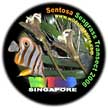
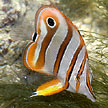
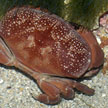
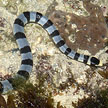
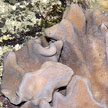
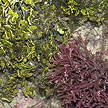
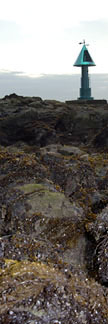
Scientific aims, methods and objectives by Siti Maryam Yaakub Aim: The aim of this exercise is to document the percent cover of seagrasses at Sentosa which serves as both a baseline study and as a record of the biodiversity of seagrasses in different areas of Singapore. From my personal observations, the species composition of seagrasses at different coastal sites in Singapore can vary widely and may well include species of seagrass that have not been officially recorded for Singapore. It is desirable to have official records of species of seagrasses in a scientific survey as opposed to mere anecdotal evidence. If this expedition turns out to be a success, it is hoped that this survey method will be extended to other areas in Singapore. Methods & Materials: The survey will be carried out using a modified method based on the one used by SeagrassNet (refer to http://www.seagrassnet.org/ for more details), which is outlined in summary below: About eight (exact number to be advised) line transects of 20 m - 50 m (depending on tide conditions) will be laid out. A 0.5 m x 0.5 m quadrat will be placed every 2 meters along the transect line and the following measurements will be made: 1) photographic record; 2) visual estimate of seagrass cover; 3) record species of seagrass in quadrat and estimate percentage makeup of each species (unless monospecific). 4) Canopy height of dominant species; 5) Document any grazing evidence on leaves; 6) Record any sighting of fruits/flowers/seeds; 7) Dominant sediment composition at each quadrat (e.g. silt, sand etc). GPS readings of each of the transects will be taken by the GIS team. In addition to the line transects, one rectangular quadrat will also be carried out. This is 10 m x 6 m in size to collect samples for a population genetic analysis of Singapore's seagrasses. Outcome of study: There are two desired outcomes from this exercise. Firstly, I hope to be able to present the results of this study at the Seagrass Conference 2006 to be held in Zanzibar in September this year. By doing this, I hope to raise the profile of seagrasses in Singapore and build on the poster presentation I gave at the same conference in 2004, that was held in Townsville, Australia. Not many people realise that there are seagrasses left here, with many of the world's leading seagrass scientists under the impression that its all been buried by reclamation and that all the "good stuff" is in Malaysia. So the poster presentation I gave in 2004 served as an eye opener for many of these scientists. Here is a PDF version of the poster (200K) The second desired outcome is to raise awareness about seagrass habitats in general. Not many people are aware of the importance of seagrass habitats to the marine environment. Seagrass habitats are often overlooked and are poorly understood, even though they play a vital role in the life histories of a large number of marine fauna and the functioning of a healthy marine ecosystem. I intend to address this during the briefing and when doing the survey. |